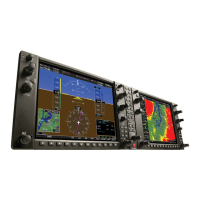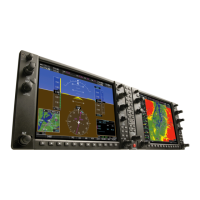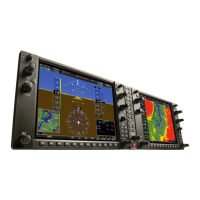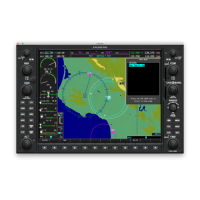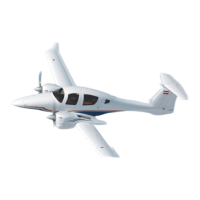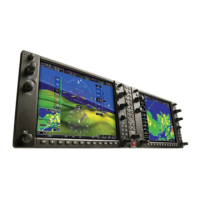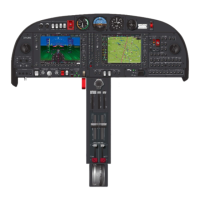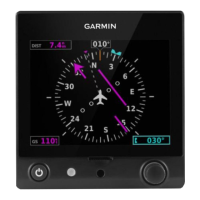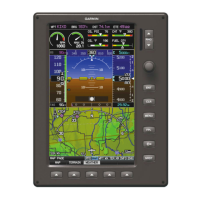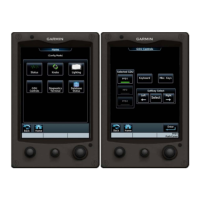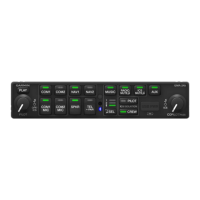Garmin G1000 Pilot’s Guide for the Diamond DA42NG
190-00962-04 Rev. A602
ADDITIONAL FEATURES
SYSTEM
OVERVIEW
FLIGHT
INSTRUMENTS
EIS
AUDIO PANEL
& CNS
FLIGHT
MANAGEMENT
HAZARD
AVOIDANCE
AFCS
ADDITIONAL
FEATURES
APPENDICESINDEX
With ESP
™
engaged, and the aircraft in a nose-up condition, opposing force steadily decreases from 20° nose-
up to 12° nose-up as aircraft pitch moves toward zero degrees. ESP
™
disengages at 12° nose-up. With ESP
™
engaged, and the aircraft in a nose-down condition, opposing force steadily decreases from 25° nose-down to
17° nose-down as aircraft pitch moves toward zero degrees. ESP
™
disengages at 17° nose-down.
The opposing force increases or decreases depending on the pitch angle and the direction of pitch travel. This
force is intended to encourage movement in the pitch axis in the direction of the normal pitch attitude range
for the aircraft.
There are no indications marking the pitch ESP
™
engage and disengage limits in these nose-up/nose-down
conditions.
Figure 8-103 ESP Pitch Operating Range When Engaged
(Force Increases as Pitch Increases & Decreases as Pitch Decreases)
30˚
25˚
20˚
15˚
10˚
5˚
0˚
5˚
10˚
15˚
20˚
25˚
30˚
30˚
25˚
20˚
15˚
10˚
5˚
0˚
5˚
10˚
15˚
20˚
25˚
30˚
35˚
40˚
45˚
50˚
35˚
40˚
45˚
50˚
50˚
45˚
40˚
35˚
50˚
45˚
40˚
35˚
ESPESP
HIGH AIRSPEED PROTECTION
Exceeding Vne will result in ESP
™
applying force to raise the nose of the aircraft. When the high airspeed
condition is remedied, ESP
™
force is no longer applied.
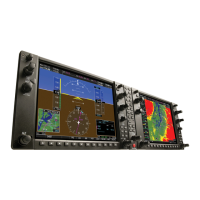
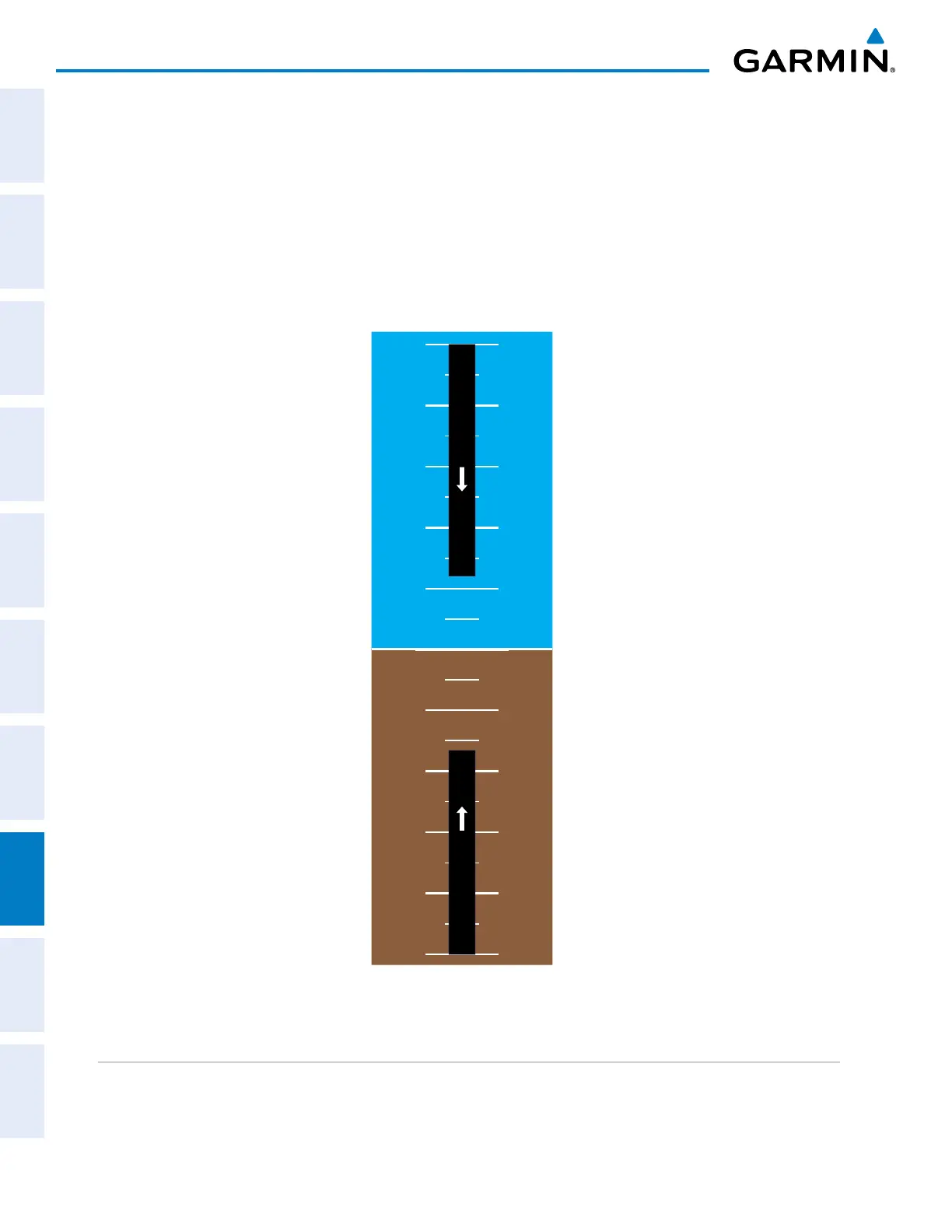